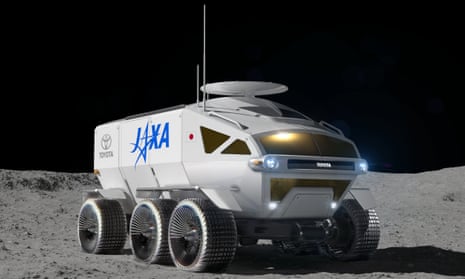Toyota is to build a self-driving lunar rover that will enable astronauts to travel on the surface of the moon without space suits, as Japan raises the stakes amid renewed international interest in lunar exploration.
The Japanese carmaker and the Japan Aerospace Exploration Agency (Jaxa) hope the vehicle will be included in a mission to the moon between 2029 and 2034, according to Kyodo news agency.
The six-wheeled rover, which is still in the conceptual stage, will be powered by a fuel cell and be able to accommodate two people – or four in an emergency – for several weeks at a time, Toyota said, adding it would have a cruising range of more than 6,200 miles (10,000km).
“As an engineer, there is no greater joy than being able to participate in such a lunar project by way of Toyota’s car-making,” said Toyota’s executive vice-president, Shigeki Terashi. “I am filled with excitement.”
The space agency’s president, Hiroshi Yamakawa, said: “Having Toyota join us in the challenge of international space exploration greatly strengthens our confidence. Manned rovers with pressurised cabins are an element that will play an important role in fully fledged exploration and use of the lunar surface.”
Japan is one of several countries investing heavily in making the 239,000-mile journey from Earth to the lunar surface.
China recently became the first nation to land an unmanned probe on the far side of the moon, and last month Israel began its maiden mission to the moon with the launch of the privately funded Beresheet spacecraft. India is expected to launch its own lunar rover later this year.
The US – which became the first country to put humans on the moon half a century ago – plans to launch a mini-outpost into lunar orbit to act as a base for manned missions to the moon and, eventually, Mars.
